Pros and Cons of Gutter Styles: Which Type is Right For You?
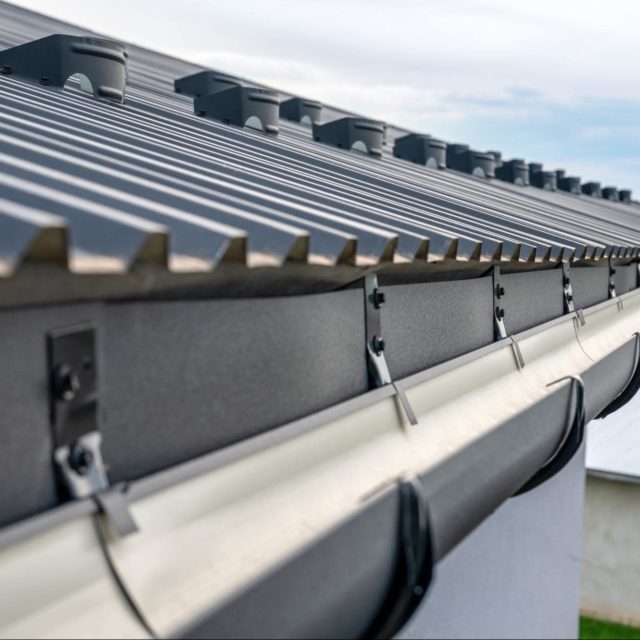
- Written by: jlbmdev

Choosing the right gutter system for your home can feel daunting, especially with all the options available on the market. So let’s explore the pros and cons of gutter styles to help you make the right choice for your home.
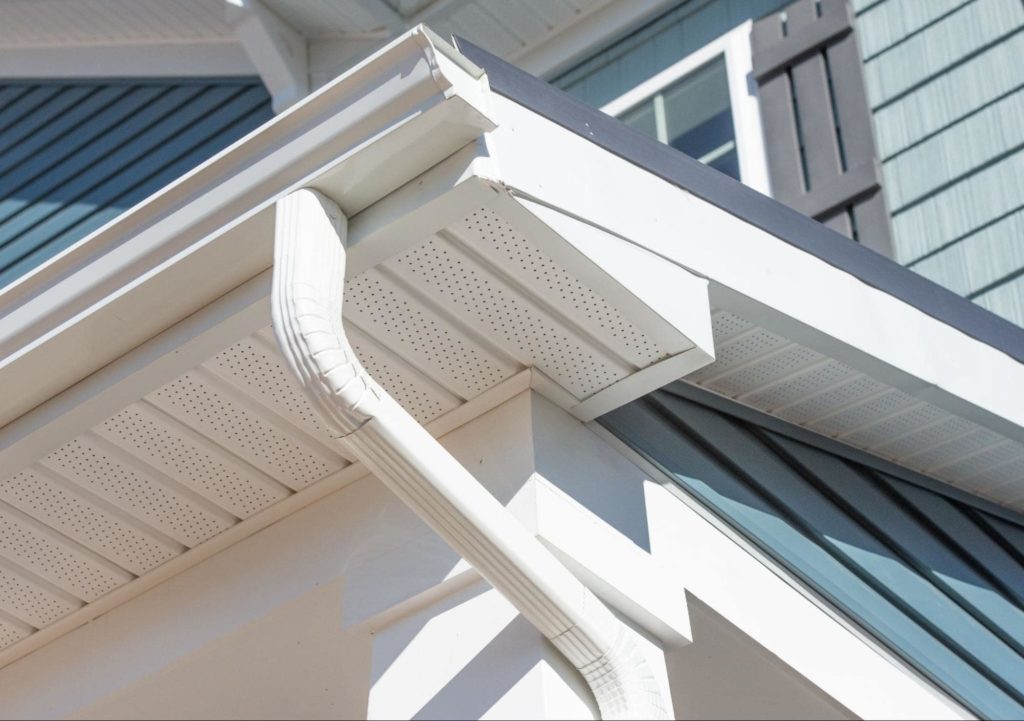
If your home needs gutters, it’s important to understand the differences between the most popular gutter types to help you make the right choice. We’ll start with one of the biggest questions—which is better, seamless vs sectional gutters?
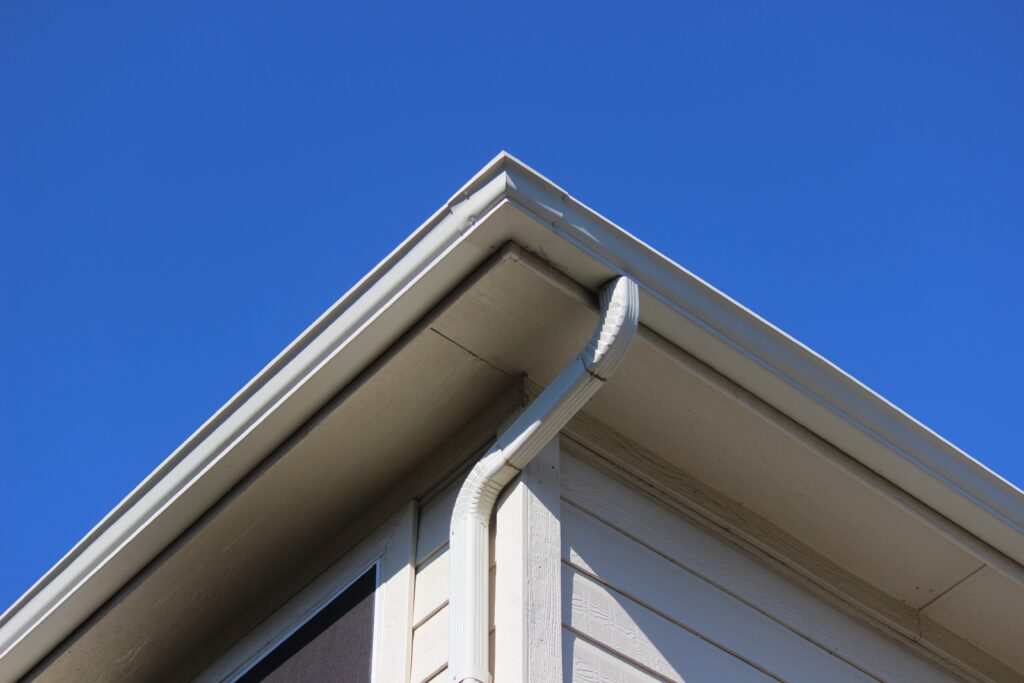
Seamless gutters are made from a single piece of material, so they require no joints or fasteners to run the length of your home. They are professionally cut to the exact length needed for your home.
As the name suggests, these gutters have no seams, so leaks are much less likely to occur. Also, less debris gets caught in the gutter, resulting in less maintenance and cleaning for you. The main difference between sectional vs. seamless is that sectional gutters are riveted together, and a gutter seal is used at the seams, whereas seamless gutters are not (hence the name).
Additionally, since seamless gutters are made from one piece of high-quality material, they’re a long-lasting gutter option for your home.
Pros
Cons
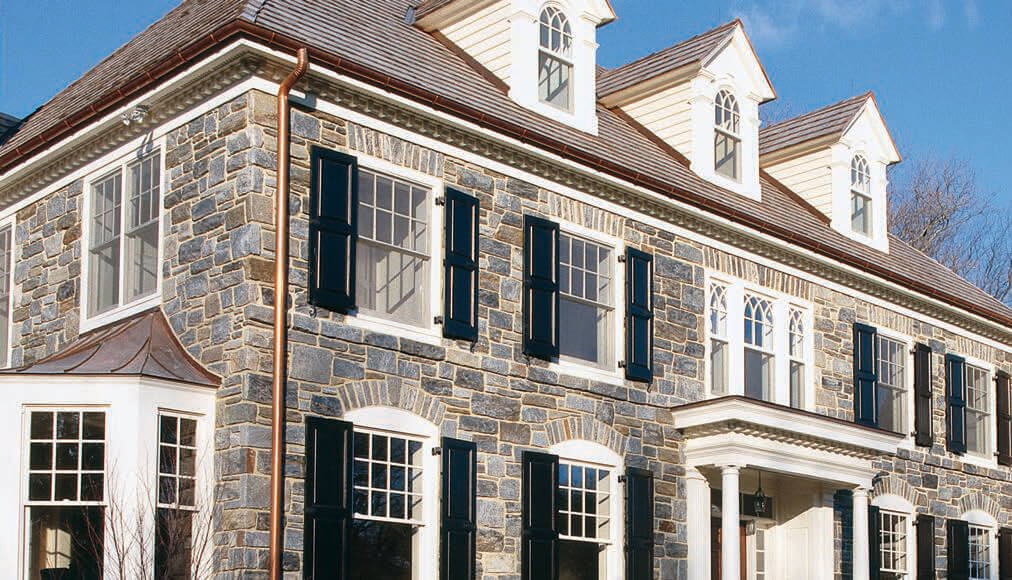
Berger Half Round Gutter
A more traditional choice, half-round gutters are constructed in a “U” shape. They’re pleasing to the eye, especially for certain homes with a more historical or colonial aesthetic. Their curved sides mean they don’t sit flush against the fascia boards, which is why brackets are usually required to keep them in place. Given their design, half-round gutters are usually more expensive to install, making them one of the less affordable gutter options.
Pros
Cons
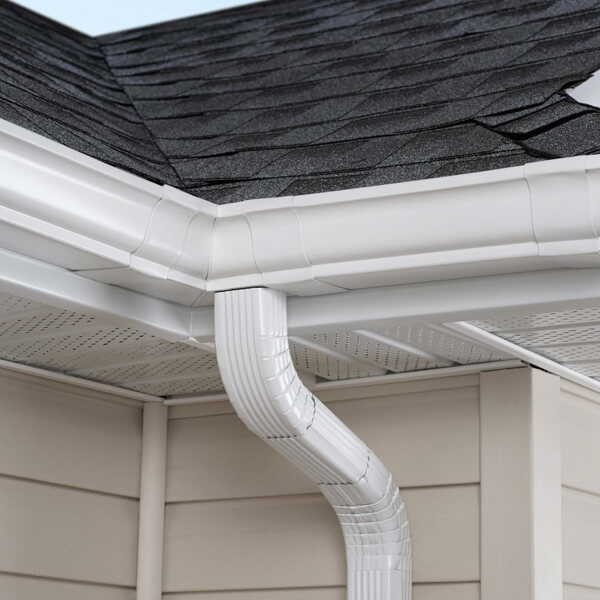
Berger K-Style Gutter with Downspout
One of the most popular gutter styles on the market, K-style gutters are also the most durable option. Known for its iconic “K” shape when looked at from the side, this style of gutter curves out on the bottom, resembling crown molding, and has a flat back that allows you to nail it directly to the fascia board.
For K-style gutters, we recommend that larger is better. Consider moving up to a 6-inch K gutter, as roofs are being built larger and with more of a pitch.
K-style gutters are much more durable than half-round and can withstand debris more effectively, leading to less bending and other damage. K-style gutters are the style of choice for seamless gutters and come in a wide variety of materials, making them as versatile as they are durable. Although K-Style gutters are available in vinyl, because of their greater expansion and contraction, we recommend aluminum or copper gutters instead.
Pros
Cons
European-style gutters are half-round gutters with gutter beads that turn to the outside (instead of the inside) and are fastened into place by a half-round hanger. These gutters are common in European systems and are sought after for their new penny gloss look when first installed.
European-style gutters offer a wider overall circumference and opening, which helps with water flow during periods of heavy rain. This style of gutter is also less accommodating to birds and rodents, due to the curved underbelly design and the concave floor of the gutter.
Pros
Cons
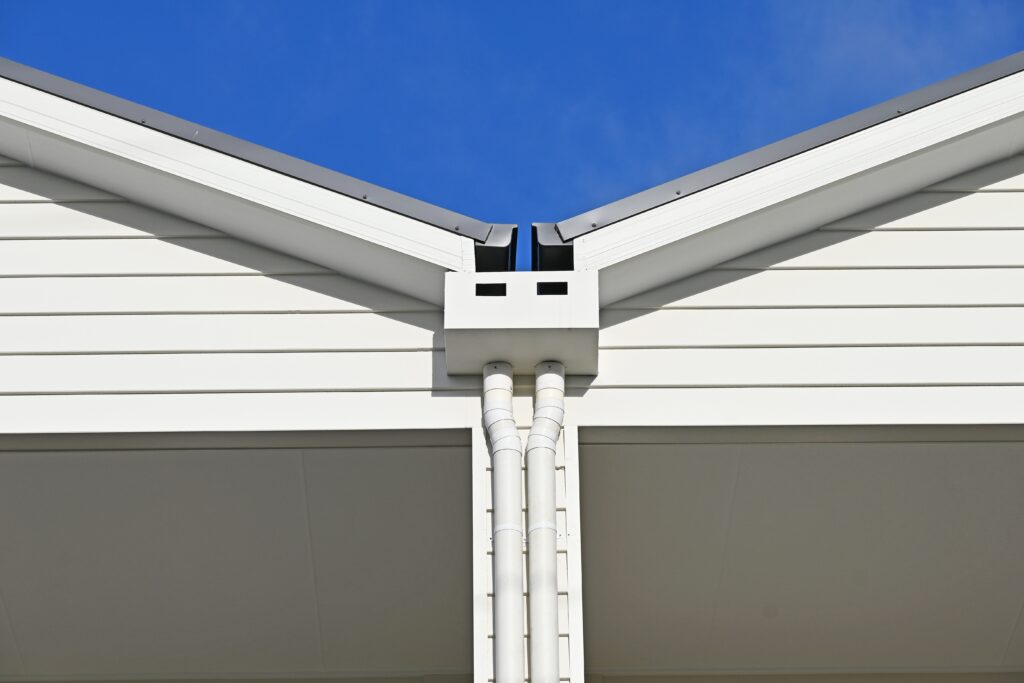
Box gutters are oversized gutters that are designed to handle the increased water volume from larger roofs. Typically, they’re found on commercial or industrial buildings, but they can also be installed on residential homes if extra water capacity and durability are needed. Larger-sized gutters (6″ and up) are usually box-style gutters because they are designed to handle large amounts of water. The bigger your roof is, the more water output.
Unlike traditional gutters that hang on the edge of the roof, oversized gutters feature a high back section that tucks under the shingles on the roof. Therefore, they need to be installed when the building is being built.
Pros
Cons
Fascia gutters are custom-built from one continuous piece of aluminum, like seamless gutters, and eliminate seams that could leak. This ensures a more reliable and durable system with no weak points where sections join. Because they are installed on-site to the exact dimensions of your home, you have a perfect fit.
It’s important to remember that fascia gutters can be a less affordable gutter option. For one, professional installation is highly recommended to make sure you have a perfect fit and you don’t damage your home. Although they’re typically the same height as K-style gutters, fascia-style seamless gutters are narrower, which can present a challenge when cleaning.
Pros
Cons
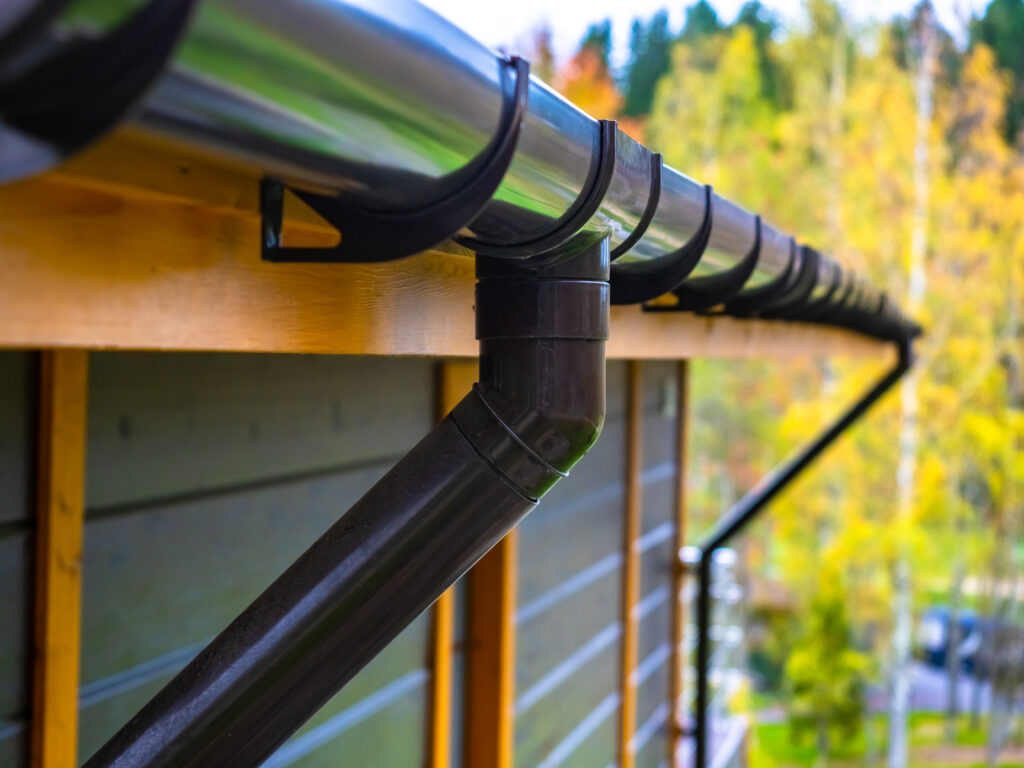
Along with gutter styles, you also need to consider gutter size (the measurement of the top opening), downspout size (length and width or diameter), and thickness. The most common gutter sizes are 5 inches and 6 inches (although 4 inches is available as well). We recommend a 6-inch gutter for homes with steep pitches or large roofs.
For downspouts, you’re usually looking at around 2 x 3 inches and 3 x 4 inches in size (or around 3 or 4 inches in diameter).
The size of a home’s gutter system is dependent on a few factors — one of them being the area’s rainfall. If you live in an area with above average rainfall (such as PA), then a larger gutter system is in your favor. A home surrounded by a lot of tall trees will also need a larger gutter system to accommodate falling leaves and debris without clogging.
Like any significant home remodeling or renovation project, installing gutters correctly should be done by a licensed and professional contractor. To find trusted and experienced contractors, visit our Find a Contractor page and get started today.
Choosing the right gutter system for your home requires researching several key factors, including your budget, the style of your house, and the climate you live in. Taking the time to weigh these factors will ensure you choose gutters that offer lasting protection and enhance your home’s curb appeal.
Budget is a primary concern for most homeowners. Before selecting a gutter style, determine how much you are willing to spend. Different materials and designs come with varying price points, so having a defined budget in place will help you narrow your choices to affordable gutter options and avoid overspending.
Your home’s architecture can play a role since different gutter styles complement different aesthetics. For example, half-round gutters can be a popular choice for traditional homes, maintaining a classic and harmonious look. If you own a historic home, local ordinances may even mandate using half-round gutters, so it’s good to check with your local zoning office before starting work.
The climate also plays a role in choosing long-lasting gutters for your home. If you live in an area with heavy rainfall, high-capacity options like box or K-style gutters are essential for effectively managing large volumes of water. Or if you experience milder weather or own a historic property, half-round gutters are the right choice.
Still confused about which to choose? We created a chart to help break everything down for you.
| Gutter Type | Cost | Durability | Ease of Installation |
|---|---|---|---|
| Seamless | $$$ | Hgh | Difficult |
| Hald-Round | $$$ | Medium | Difficult |
| K-Style | $$$ | High | Difficult |
| European-Style | $$ | High | Difficult |
| Box Gutters | $$$ | High | Difficult |
| Fascia | $$$ | High | Difficult |
Making a gutter selection can be overwhelming. J&L is here to discuss the pros and cons of gutter styles and help you with your decision. Contact us today and tell us what you’re looking for.